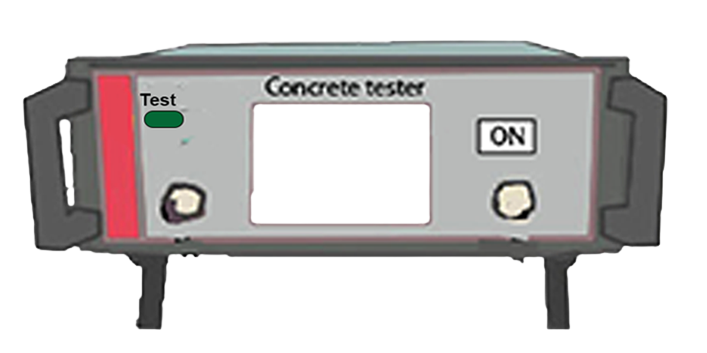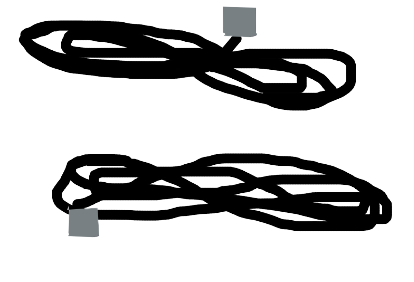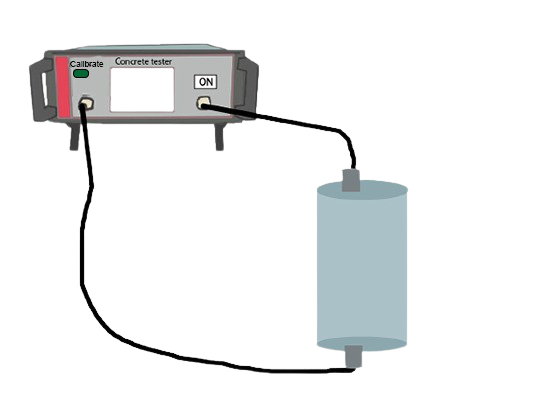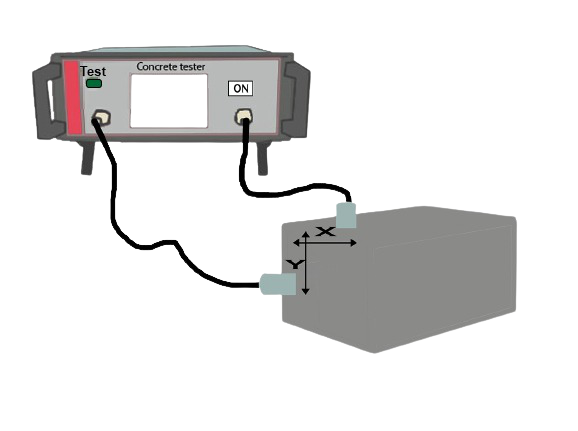Ultrasonic Pulse Velocity Test
Objective:
To determine the quality of the hardened concrete
Apparatus used:
1. UPV Meter
2. Standard Glass Rod for Calibration
3. Connector Cable with Transducers
4. Concrete Specimen
Working Principle:
The ultrasonic pulse is generated by an electroacoustical transducer. The principle of accessing the quality of concrete depends on the obtained pulse velocity. Higher the velocity defines good quality of concrete. The lower velocity indicates that the quality of the concrete is poor.




The UPV machine is calibrated using a standard specimen of known value. In this test, glass rod having a standard value of 40.4 μs is used as a specimen.


Calibrate
40.4 μs
INDEX
C-Calibrate
G-Green
R-Red
P-Purple
Quiz
Why UPV has to be calibrated?
To start the testTo end the test
To initialize the UPV
None of the above


TRIAL 1: Switch ON the machine. From the given concrete
members, select one concrete member. Place the transducers in correct
position to calculate time in ‘μs’.
Concrete Members












C
R
Test
V
Calculation:
Velocity ‘V’ = L/T
Distance ‘L’ (mm)Quiz
Classify the quality of concrete, if the pulse velocity is between 3.5 km/s and 4.5 km/s.
ExcellentMedium
Good
Poor
Calculation:
Velocity ‘V’ = L/T
Distance ‘L’ (mm)Pulse Velocity=
Quiz
If the Pulse Velocity is 4.5 km/s,Classify the quality of concrete.
ExcellentGood
Medium
Poor
Calculation:
Velocity ‘V’ = L/T
Distance ‘x’ (mm)Distance ‘y’ (mm)
Pulse Velocity=
Quiz
Identify the formula to calculate pulse velocity in Semi Direct Transmisson Mode.
1)(x2+y2)/22)(x2-y2)/2
3)√(x2+y2)/Time
4)√(x2-y2)/Time
TRIAL 2: Switch ON the machine. From the given concrete
members, select one concrete member. Place the transducers in correct
position to calculate time in ‘μs’.
Concrete Members













C
R
Test
V
Calculation:
Velocity ‘V’ = L/T
Distance ‘L’ (mm)Calculation:
Velocity ‘V’ = L/T
Distance ‘L’ (mm)Pulse Velocity=
Calculation:
Velocity ‘V’ = L/T
Distance ‘x’ (mm)Distance ‘y’ (mm)
Pulse Velocity=
Classify the quality of the concrete if the pulse velocity is between 3.0 km/s and 3.5 km/s
ExcellentGood
Medium
Poor
What is the quality of concrete having pulse velocity of 5.7 km/s ?
GoodExcellent
Medium
Poor
| Trial | Distance 'x' (mm) | Distance 'y'(mm) | Time 'T' (s) | Velocity 'V' (km/s) | Quality of the concrete |
|---|---|---|---|---|---|
| 1 | |||||
| 2 |
| Trial | Velocity 'V' (km/s) |
|---|---|
| 1 | |
| 2 |

